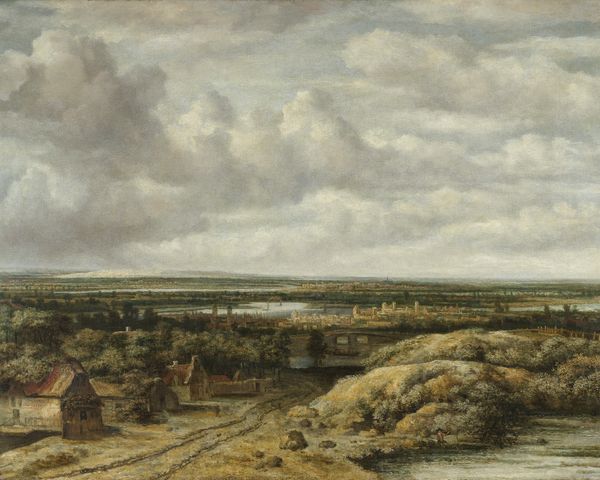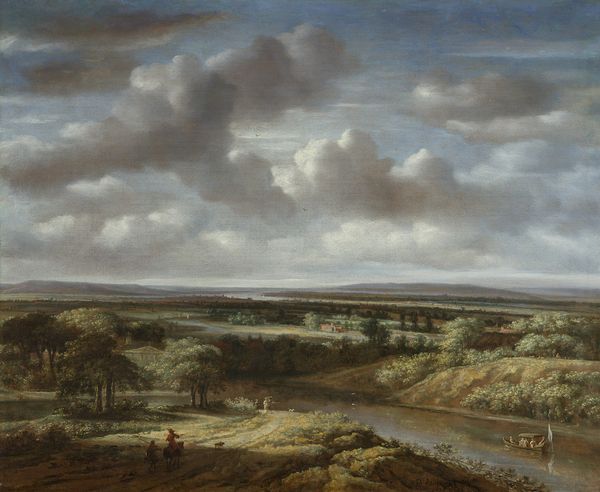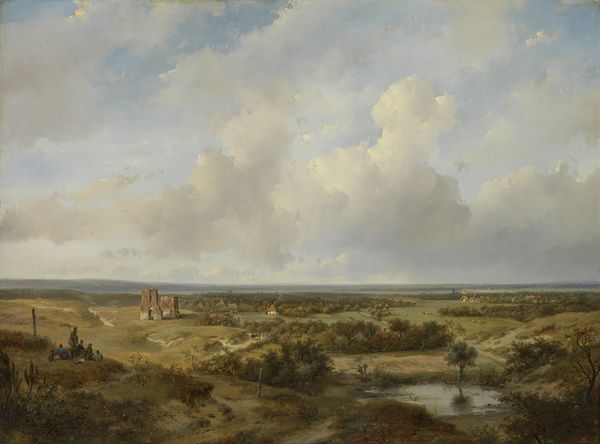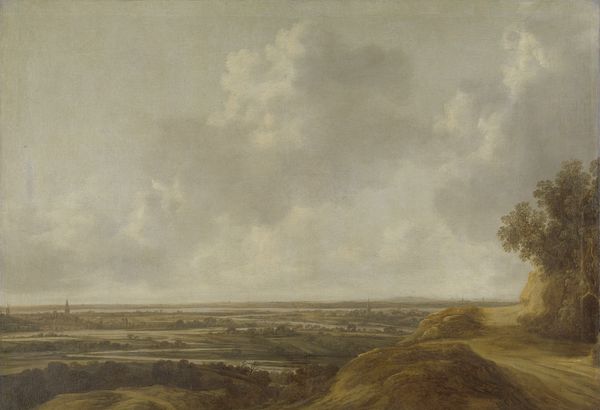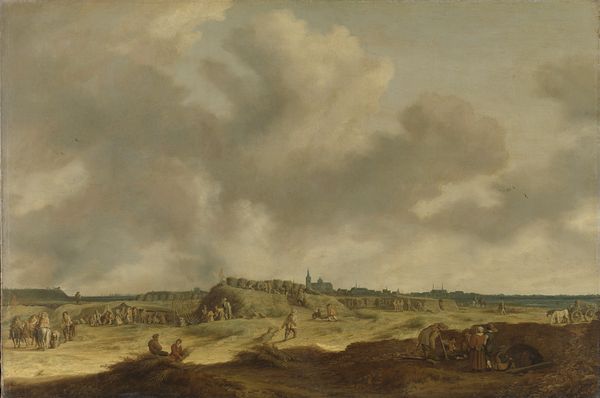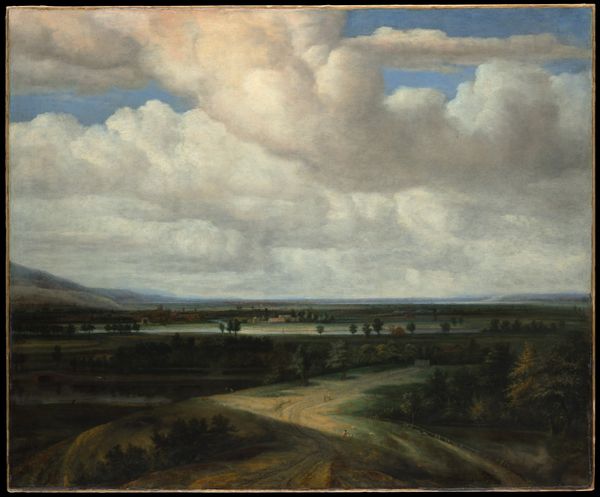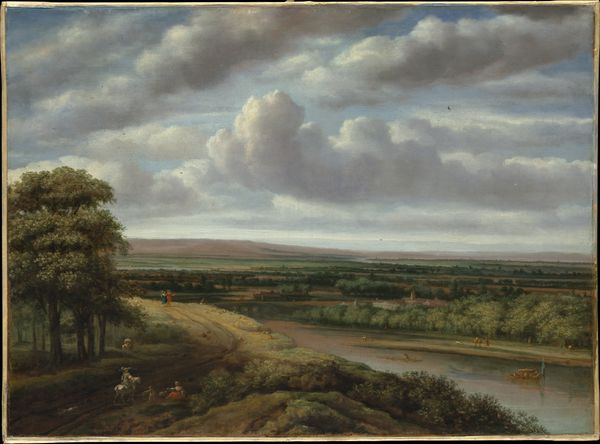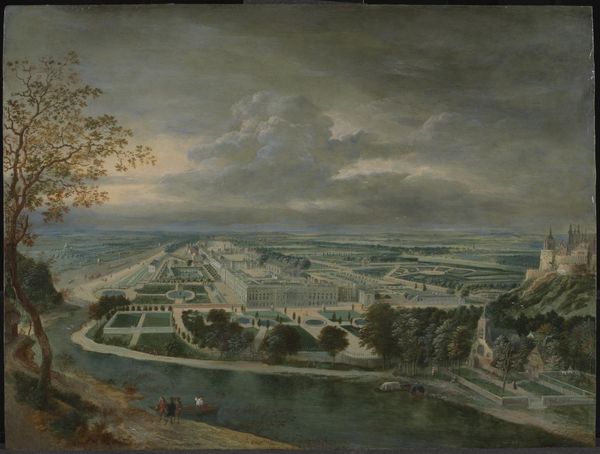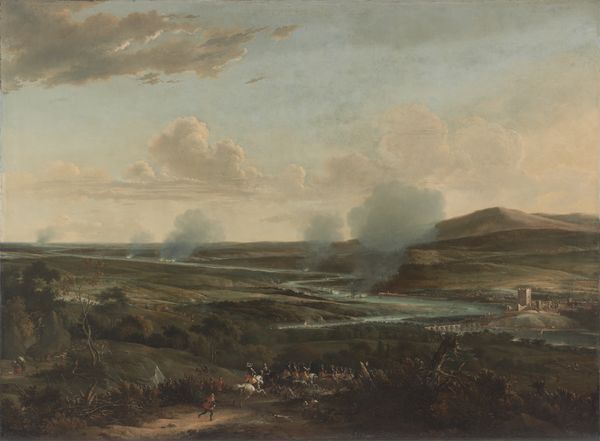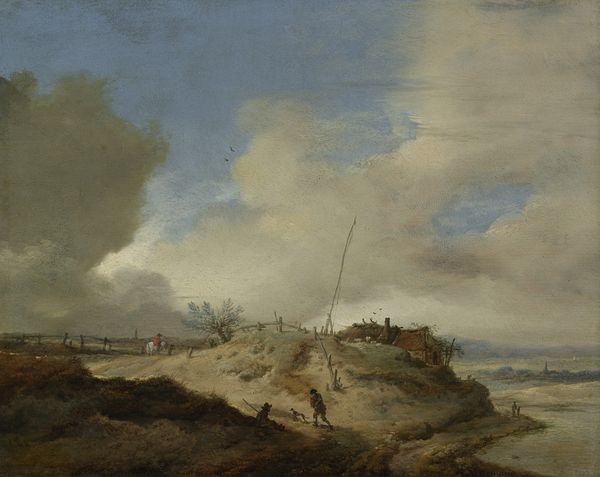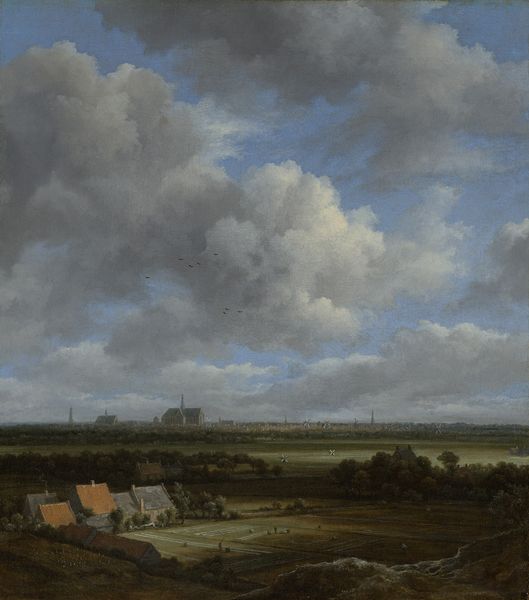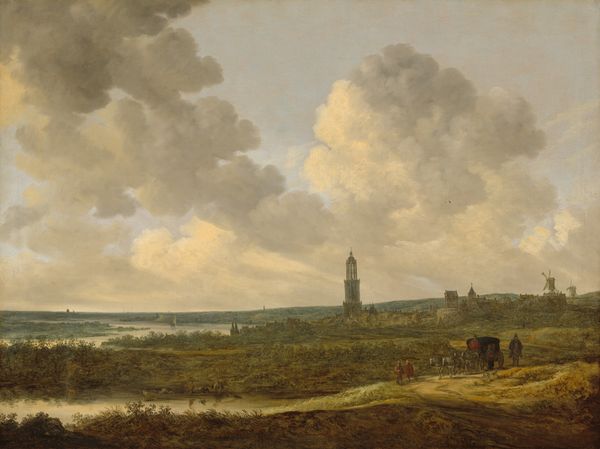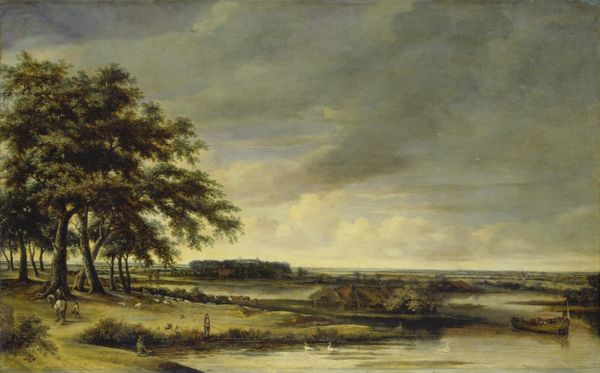
Dutch Panorama Landscape with a Distant View of Haarlem 1654
0:00
0:00
painting, plein-air, oil-paint, canvas
#
baroque
#
dutch-golden-age
#
painting
#
plein-air
#
oil-paint
#
landscape
#
oil painting
#
canvas
#
cityscape
#
history-painting
#
realism
Dimensions: 150 cm (height) x 203 cm (width) (Netto), 190 cm (height) x 245 cm (width) x 12 cm (depth) (Brutto)
Philips Koninck made this expansive Dutch landscape using oil paints, sometime in the mid-17th century. The way the paint is applied here speaks volumes. Notice how Koninck builds up the clouds with thick, almost sculptural strokes, contrasting with the thin, translucent washes used for the distant fields. This wasn't just about depicting a scene; it was about the act of seeing, feeling the weight and texture of the world. The panoramic format itself is significant. It suggests a society taking stock of its territory, literally mapping its economic potential. In the distance, Haarlem hints at the urban centers driving trade and production. The land wasn’t just scenery, but a source of wealth and a stage for human activity. Paying attention to materials and technique helps us understand how this painting reflects the social and economic landscape of its time, blurring the line between art and documentation.
Comments
statensmuseumforkunst almost 2 years ago
⋮
A shadow cast by a giant cloud falls upon the land scape, creating a diagonal that divides the land into sunlit and shaded parts. The dunes in the foreground form criss-crossing lines, oscillating between light and darkness. In the far distance we see the contours of the city of Haarlem, the spire of the St Bavo Cathedral piercing the horizon. In front of the city, yet still far out in the distance towards the horizon, a flat stretch of land emits its own luminescence; perhaps these are the bleaching fields outside of Haarlem? The criss-crossing bands of light and shadow across the landscape create the illusion of an endless space. The Baroque era ushers in the coarse, loose manner of painting. Individual brushstrokes are clearly distinct and do not cover the underlying layers in shaded areas. Philips Koninck has painted the flickering interplay between light and shadow, between shadows and reflected light, a little like the eye would perceive reality on a summer's day. In so doing he follows in the footsteps of his tutor and fellow Dutchman, Rembrandt
Join the conversation
Join millions of artists and users on Artera today and experience the ultimate creative platform.
statensmuseumforkunst almost 2 years ago
⋮
Here it is, then, the natural-looking, grand landscape spreading itself before our eyes. Our gaze is allowed to wander all the way out to the horizon, where we discover the city of Haarlem. We are clearly looking at flat, carefully tilled Dutch agricultural land here; land that man has taken from nature and cultivated. The term "landscape" (landschap) is originally Dutch and was first introduced as a painters' term. It harks back to the time where the mainly Protestant part of The Netherlands claimed their independence in the 16th century; the first pure depictions of landscapes emerge around 1620. Landscape painting served a specific purpose for a people who were constantly threatened by flood and by inner and outer conflict. It conveyed a message that nature could be controlled, and that in spite of all differences there is still something the Dutch all have in common: The reclaimed land.
statensmuseumforkunst almost 2 years ago
⋮
Philips Koninck is best known for his panoramic landscapes, but he also painted everyday scenes, religious scenes, and portraits. Like so many other Dutch 17th century artists he had to supplement his earnings with other jobs and sources of income; Koninck was also an innkeeper and owned a ferry service operating between Amsterdam, Leiden, and Rotterdam. Inspired by Rembrandt Philips Koninck is believed to have been a student of Rembrandt (1609-1669), although no conclusive evidence supports this theory. Whatever the case may be, Koninck was certainly inspired by Rembrandt, particularly in his juvenile works from the late 1630s. The idealised Dutch panorama Unlike other Dutch landscape painters Koninck focused on one particular type of landscape: idealised Dutch panoramas inspired by the countryside of Gelderland. Koninck as a mature artist The painting shown here is typical with its high viewpoint from a hilltop overlooking a flat landscape. It shows Koninck as a mature artist who has developed his own personal style through years of application. Here, he worked with an unusually sketch-like style and a large-scale format which in itself served to heighten the significance of the genre, from being modest cabinet pieces to something approaching the status of the great history paintings.
